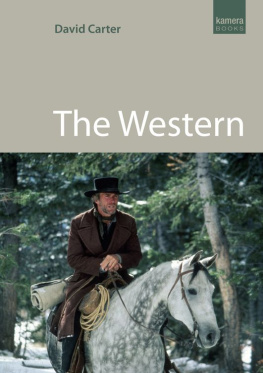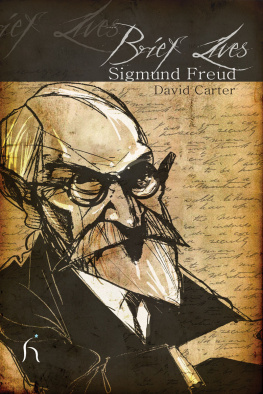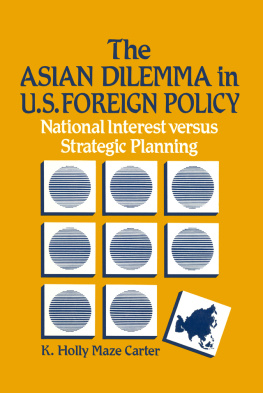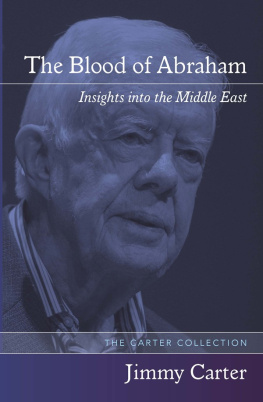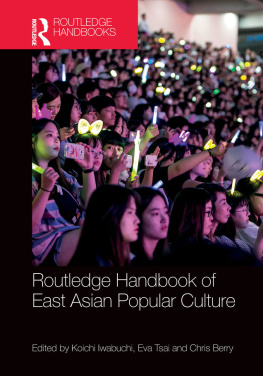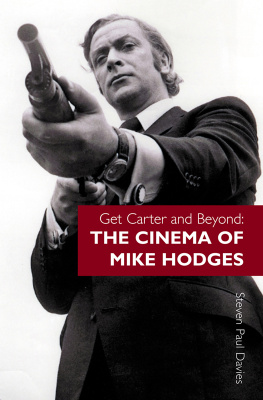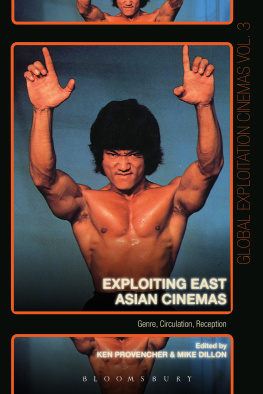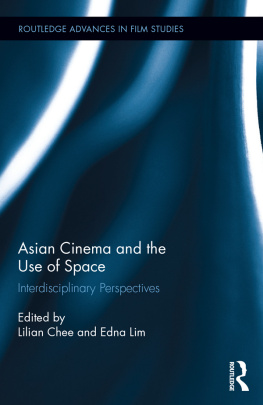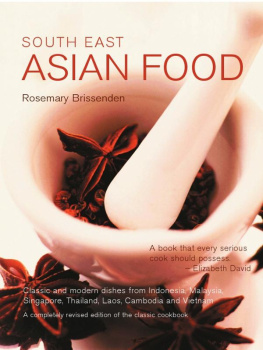David Carter - East Asian Cinema
Here you can read online David Carter - East Asian Cinema full text of the book (entire story) in english for free. Download pdf and epub, get meaning, cover and reviews about this ebook. year: 2010, publisher: Oldcastle Books, genre: Non-fiction. Description of the work, (preface) as well as reviews are available. Best literature library LitArk.com created for fans of good reading and offers a wide selection of genres:
Romance novel
Science fiction
Adventure
Detective
Science
History
Home and family
Prose
Art
Politics
Computer
Non-fiction
Religion
Business
Children
Humor
Choose a favorite category and find really read worthwhile books. Enjoy immersion in the world of imagination, feel the emotions of the characters or learn something new for yourself, make an fascinating discovery.

- Book:East Asian Cinema
- Author:
- Publisher:Oldcastle Books
- Genre:
- Year:2010
- Rating:5 / 5
- Favourites:Add to favourites
- Your mark:
- 100
- 1
- 2
- 3
- 4
- 5
East Asian Cinema: summary, description and annotation
We offer to read an annotation, description, summary or preface (depends on what the author of the book "East Asian Cinema" wrote himself). If you haven't found the necessary information about the book — write in the comments, we will try to find it.
East Asian Cinema — read online for free the complete book (whole text) full work
Below is the text of the book, divided by pages. System saving the place of the last page read, allows you to conveniently read the book "East Asian Cinema" online for free, without having to search again every time where you left off. Put a bookmark, and you can go to the page where you finished reading at any time.
Font size:
Interval:
Bookmark:
David Carter

A great debt is owed to the many scholars whose research inspired and informed me during the writing of this book. Some of the works which proved most rewarding are included in the section on Reference Materials. I also wish to record my special debt to Mr. Kim Chan Young, who helped me access many resources through his knowledge of the Korean, Japanese and Chinese languages. Finally thanks are also due to Hannah Patterson for her scrupulous editing.
There has been a rapid surge in international recognition of the films of the East Asian region in recent years. This is partly due to their being more readily available on video and DVD, but also because the films are increasingly winning top prizes at highly respected film festivals throughout the world. Some directors have acquired celebrity status, such as Ang Lee, Wong Kar Wai and Kim Ki-duk. The ultimate accolade has been the provision of resources, sometimes outside their native countries, to make big, glossy, Hollywood-style films, occasionally at a loss to the cultures that originally produced them.
Although one thinks of the cultures in question as disparate, they also have many features in common, which enables them to be classed loosely as East Asian. For the purposes of this book East Asia incorporates the countries of The Peoples Republic of China (Mainland China), Hong Kong (now part of China but long a separate entity), Taiwan, Japan and the two Koreas (North and South). These countries share much common cultural heritage, in various proportions: that of Buddhism, Confucianism and in two cases Communism. They have also interacted with each other politically in various ways during the course of their histories. It is therefore meaningful to study the films of the region in relation to each other.
Many films of all the countries in the region reflect their shared Buddhist and Confucian heritage, and those of Mainland China and North Korea are conditioned by Communist ideology. In the works of some of the greatest directors it is also possible to trace the influence of traditional conventions in the visual arts which are uniquely East Asian: the imagery, the composition within the frame, and the sense of space (when to fill it, when to leave it empty). Forms of martial arts have also contributed greatly to the success of the films, from the most popular entertainment products to the most accomplished artistic achievements. Each country has been able to popularise its own unique forms of martial arts through its films: kung fu and tai chi in the Chinese-speaking areas, kendo and karate in Japan, and taekwondo and taekgyeon in Korea (mainly in the South).
As the cinemas of South and North Korea have common beginnings and share a common history until after World War II, the historical account in this book is presented as a continuous narrative divided into three parts: the period under Japanese domination, South Korea and North Korea. In the case of Taiwan, as the country was a new state set up by refugees from Mainland China and there had been only a little film production on the island during Japanese domination, it has been possible to depict its cinema history separately from that of the Mainland.
This book attempts to provide a broad overview of developments in the cinema in East Asia from the beginnings to the present day. With such a broad scope it has not been possible to describe all the films in depth; some directors alone have made over a hundred films. It is intended that the brief introductions provided to selected directors and their films will stimulate interest in the reader to explore further the full range of his or her output. In the final analysis all the films included in the present study are the authors own personal choice. Some well-known films, including the readers favourites, will inevitably be absent. But the authors selection has been well-considered, and films have only been included if they meet one or more specific criteria: they are historically significant, artistically accomplished, innovative, good examples of a genre, in some way unique, represent a trend, reflect a social or cultural theme in their countries of origin, or represent major landmarks in a directors career. Some directors are not included, either because they do not meet any of these criteria or simply for lack of space.
In the historical surveys of the film industries of each country, films are cited using the most commonly known English versions of their titles. When deemed useful the original language title is sometimes added in transliteration. This occurs particularly if the film might be otherwise difficult to track down or if it is not included in the lists of selected directors and films. Sometimes the original language title in transliteration is used alone, if no English language version is commonly used. All directors and actors names follow the word order common to all the major languages of the region: family name first followed by given names (e.g. Kurosawa Akira). In the body of the text, directors and actors who have adopted western-style second names, however, are cited according to the normal western convention, with the family name second (e.g. Jackie Chan). A different convention has been adopted, for ease of reference, in the sections containing lists of selected directors and films and in the index, as explained in the relevant paragraphs below. English transliteration follows the currently accepted system in each country, except when a directors name has been internationally recognised under a different or former mode of spelling. The transliteration of the Japanese language has long been standardised, but in South Korea transliteration has undergone three different general modifications in the last two decades and North Korean transliterations do not always correspond to those in the South. It should be noted that with Korean Lee and Yi are alternative renderings of the same name, as are Park and Pak, Pae and Bae, etc. A useful tip when tracking names in bibliographies is to say them aloud and check those which sound similar, even if the spelling is different. With the Chinese language the situation is more complex, with conventions being different between the Mainland and Taiwan, and between the Mainland and Hong Kong before the take-over. Conventions also differ for representing the Mandarin and Cantonese dialects. It is impossible to include all alternatives within the scope of this book. The problem has been further complicated by the fact that many directors moved from one country to the other for either personal or political reasons, and the transliterations of their names often changed accordingly. I have endeavoured to keep things as simple as possible. Chinese directors and the titles of Chinese films are thus spelt in the transliterated forms by which they are most widely known. For more detailed information on the varieties of transliterated forms readers are advised to consult the relevant works in the section on Reference Materials. The abbreviation q.v. (quod vide) is used on occasions to advise the reader to seek further information on the topic in other sections of the book by consulting the index.
It has not been possible within the scope of the present book to cite cast and crew for all the films included. Generally each list includes first the following information: the directors names in alphabetical order by family name. In the case of directors who have adopted western-style second names, they are also listed by family name first, with the adopted name second and separated by a comma, to indicate the normal order (e.g. Jackie Chan becomes Chan, Jackie). The same convention has been used in the index. There are indications of dates of birth and death, where known, together with place of birth and death where significant (i.e. in the case of certain Chinese directors). In the case of some directors, mainly Chinese, alternative forms of the names are provided if these are in common use. This is followed by information on the number of films directed, written, acted in and produced, together with a biographical note, but only when such information is available and deemed to be of interest. The selected films are then listed in chronological order under the most common English version of the title, together with a transliterated version of the original language title, and the date of the films first release. There is also an indication of the original language only when it is necessary to distinguish dialects (as in the case of many Chinese films made in Hong Kong). There then follows a summary of the plot. Under the heading Comments are included any critical reflections and also any references to important actors, writers, cinematographers, and so on. Where insufficient information on plots is available, and no enlightening comments can be made, these headings are omitted. The film is still cited however to indicate that it is important in the directors oeuvre. In the case of North Korea a different approach has had to be adopted, because until the late 1970s many films were acknowledged only as group productions, with no directors cited. Also it is difficult to obtain further information concerning many North Korean films. They have all, therefore, been listed by year of production. It should finally be stressed that many directors and films are cited in the historical surveys but not included in the lists of selected directors and their films.
Font size:
Interval:
Bookmark:
Similar books «East Asian Cinema»
Look at similar books to East Asian Cinema. We have selected literature similar in name and meaning in the hope of providing readers with more options to find new, interesting, not yet read works.
Discussion, reviews of the book East Asian Cinema and just readers' own opinions. Leave your comments, write what you think about the work, its meaning or the main characters. Specify what exactly you liked and what you didn't like, and why you think so.

